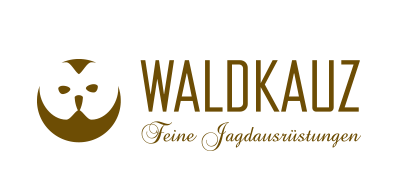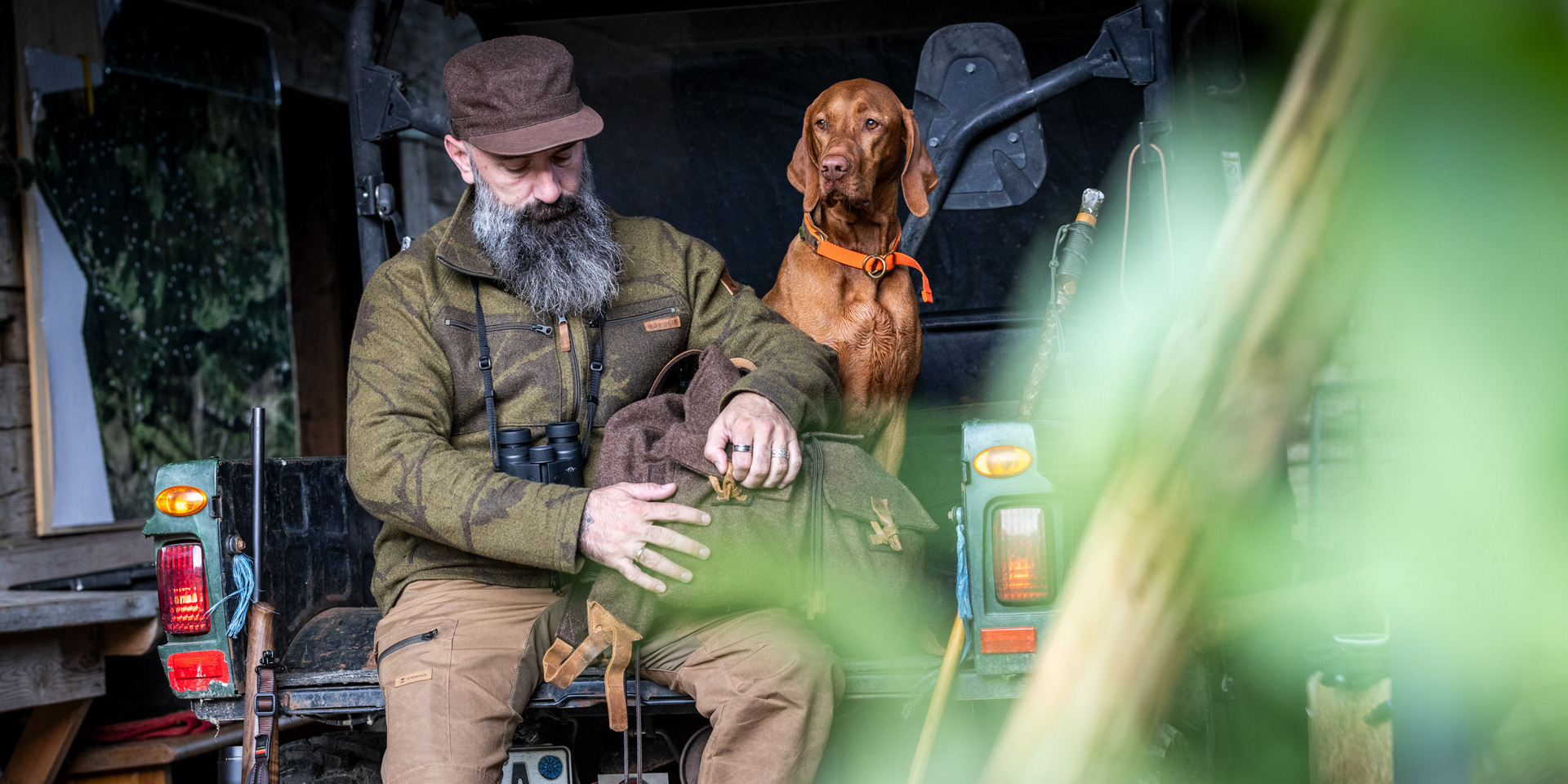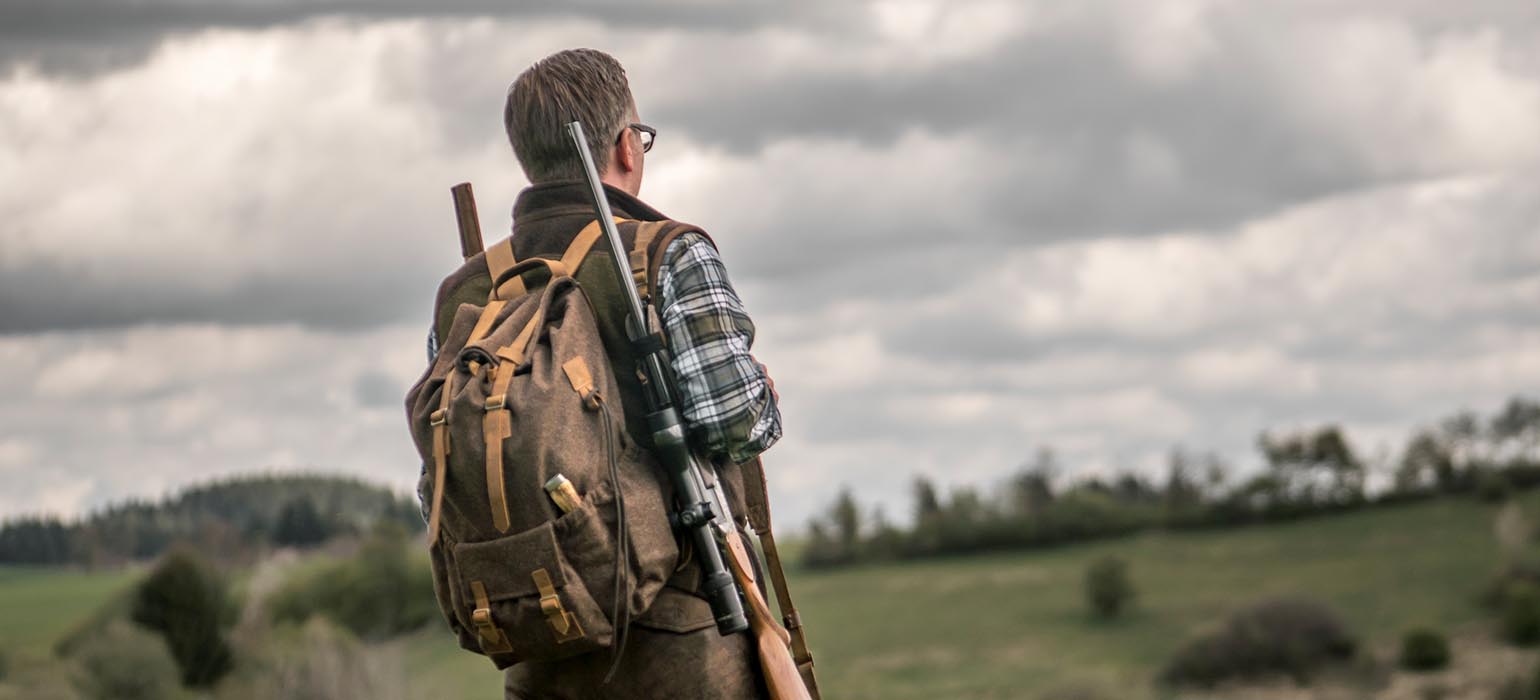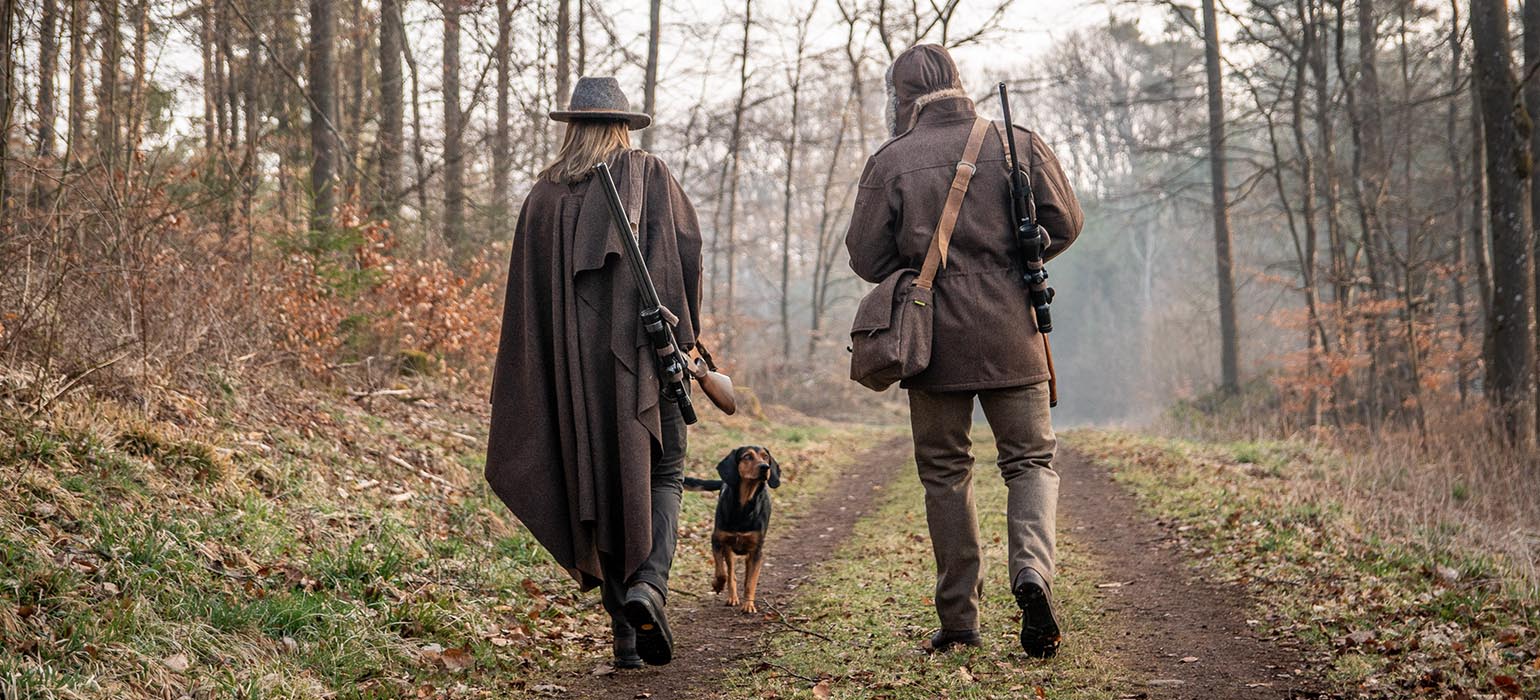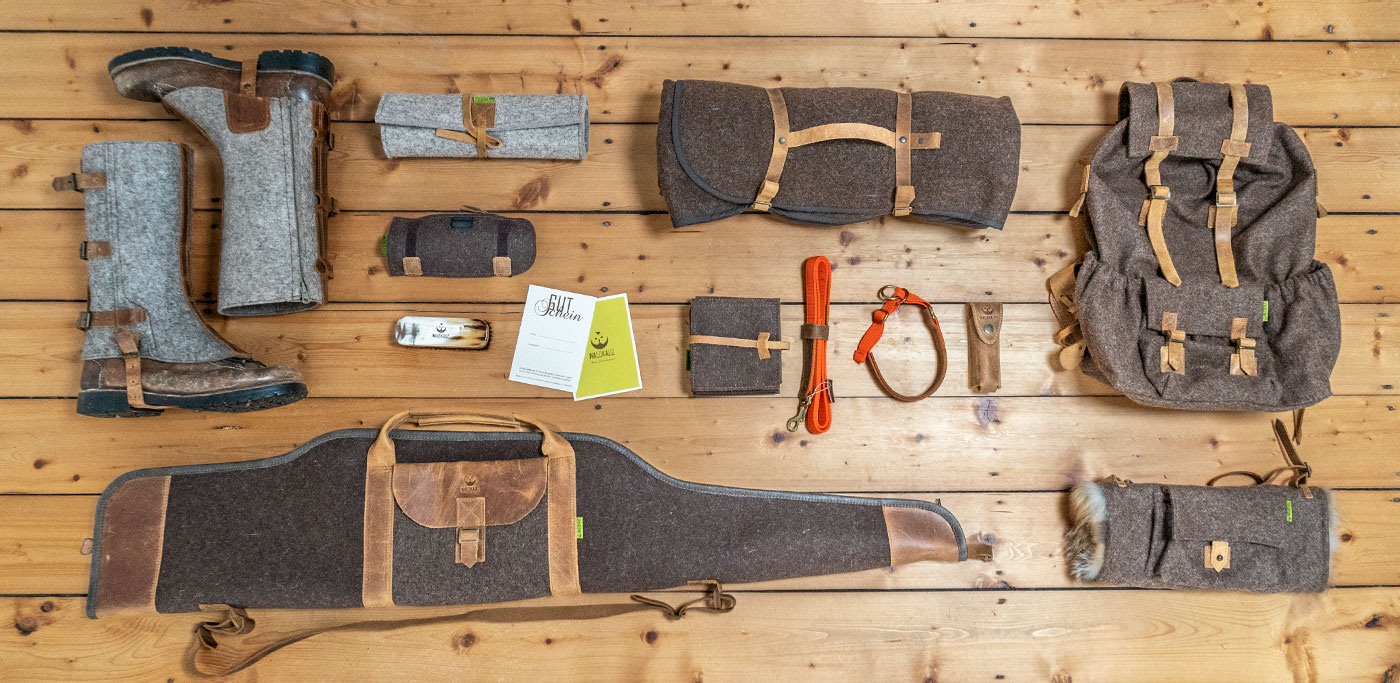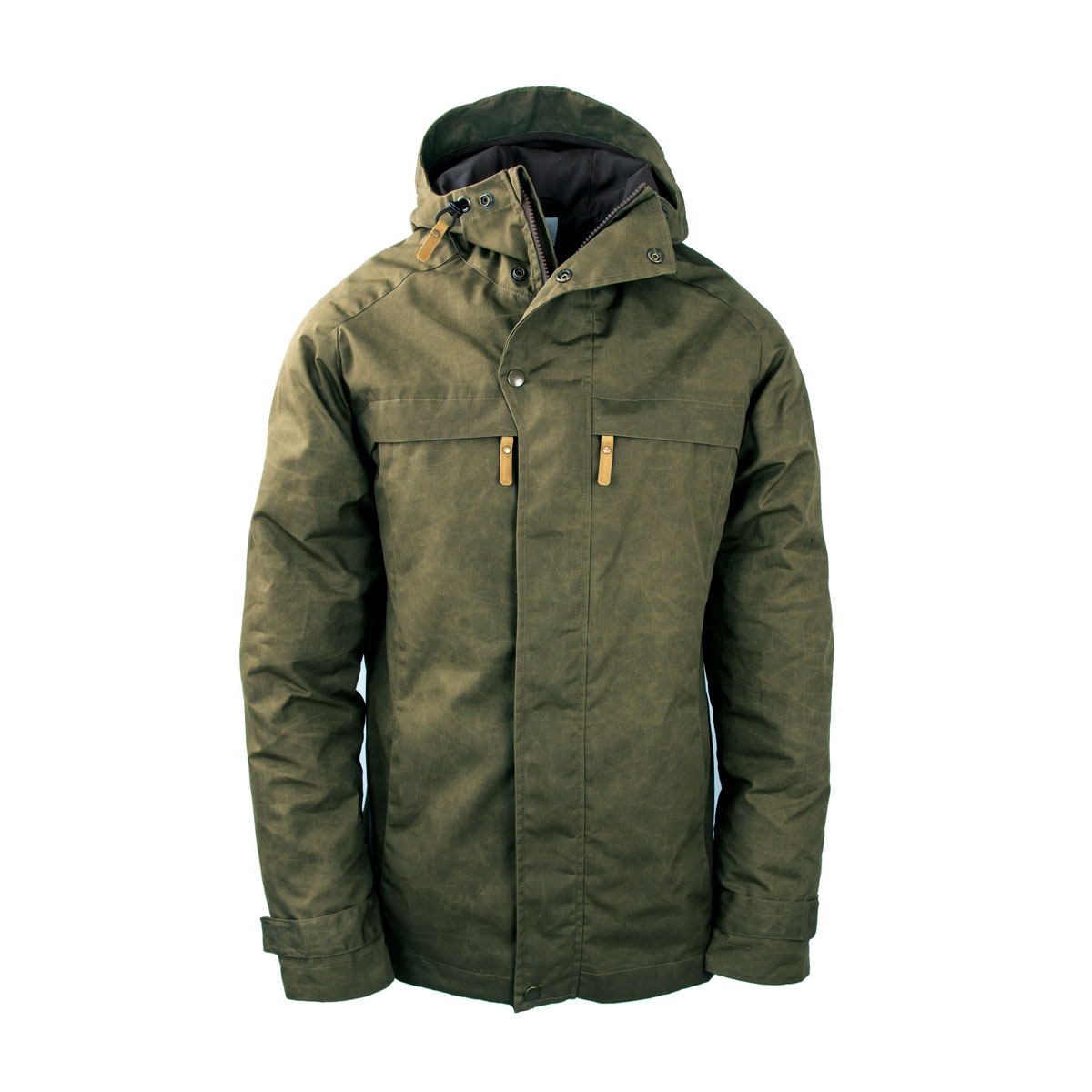STEINKAUZ outdoor jacket "Windfang", olive

STEINKAUZ outdoor jacket "Windfang", olive
€339.00*
Available, delivery time: 1-3 days
Do you need advice? We are happy to assist via email at post@waldkauz.net or by phone at +49 (0)2131 547553.
Product number:
SK0010167-XL
Manufacturer:
STEINKAUZ - Waldkauz GmbH & Co. KG, Berghäuschensweg 57-59, 41464 Neuss, Deutschland, post@waldkauz.net
Weight:
1 kg
Product information "STEINKAUZ outdoor jacket "Windfang", olive"
Outdoor jacket made of waxed polycotton
Outer material: Waxed polycotton made from recycled polyester and organic cotton (65% polyester, 35% cotton)
Lining: Polycotton (65% polyester, 35% cotton)
Contains non-textile parts of animal origin (leather)
- Lightly lined inside
- Hood adjustable over 2 axes
- 4 outer pockets and 2 inner pockets
- Adjustable wind cuffs in sleeves and hem
- Under and overhang at the main zipper
- Practical 2-way zipper
- Sleeve cuffs adjustable with Velcro
- Convenient zipper pulls made of genuine leather
- PFC-free and biodegradable wax-based impregnation
- Re-waxable at any time
- Weight: approx. 1000g (Size L)
- Sizes: S - 3XL
Outer material: Waxed polycotton made from recycled polyester and organic cotton (65% polyester, 35% cotton)
Lining: Polycotton (65% polyester, 35% cotton)
Contains non-textile parts of animal origin (leather)





One cut, two jackets: REGENSEGEN and WINDFANG
With the STEINKAUZ, there are two jackets based on the same pattern: While the REGENSEGEN represents the "Heavy Duty" version, the WINDFANG is the lighter all-rounder. During the development of our new jacket model, we found two factions concerning the material question, each with valid arguments. The advocates of the heritage faction favored the heavy and strongly waxed 100% cotton Waxed Cotton in British style (ours, incidentally, also comes from there). The representatives of the more modern direction preferred another outdoor fabric, which also ranks among the classics - Poly-cotton or Polycotton, the widely used outdoor fabric, in our case made from recycled polyester and organic cotton. The classic Waxcotton, being a pure cotton fabric, can absorb much more wax than a blended fabric. This makes it very rain-resistant but comparably heavy. Polycotton, on the other hand, is not only lighter but also somewhat cheaper to produce (and in terms of wax consumption).
So what to do? Which of the two alternatives should we choose? Usually, at this point, especially as a smaller manufacturer, a decision needs to be made. That's what we did, but rather unusually: we decided to make both jackets! Both fabrics have their charm and their fans, and we believe our customers should decide which model suits them better. So now we have the REGENSEGEN outdoor jacket made of 100% waxed cotton and the WINDFANG outdoor jacket made of Polycotton.
The surface of the Waxcotton changes fairly quickly with use, gaining a beautiful vintage effect. If the waxing diminishes over time, the jacket can be rewaxed as often as desired.
So what to do? Which of the two alternatives should we choose? Usually, at this point, especially as a smaller manufacturer, a decision needs to be made. That's what we did, but rather unusually: we decided to make both jackets! Both fabrics have their charm and their fans, and we believe our customers should decide which model suits them better. So now we have the REGENSEGEN outdoor jacket made of 100% waxed cotton and the WINDFANG outdoor jacket made of Polycotton.
Light tour companion: outdoor jacket "Windfang" made of waxed polycotton
The STEINKAUZ Outdoor Jacket "Windfang" is stylistically and materially the perfect complement to our loden jackets, hoodies, and equipment. Where the bad weather properties of loden reach their limits, waxed cotton forms the necessary outer layer to keep rain outside and a good climate inside. With lighter clothing, the material has a cooling effect. However, with a layer of loden or a warm wool sweater as an underlayer, it effectively retains heat inside.The surface of the Waxcotton changes fairly quickly with use, gaining a beautiful vintage effect. If the waxing diminishes over time, the jacket can be rewaxed as often as desired.
What to expect from waxed fabrics
There is much half-knowledge and some misunderstandings about waxed fabrics, also referred to as Waxed Cotton, Waxcotton, or Waxed Polycotton. We elaborate on what these fabrics can do in our STEINKAUZ-Blog.Regarding noiselessness, waxed fabrics do not match the silence of loden. The Windfang is not noiseless due to its wax impregnation. However, the wax absorbs body heat when worn, becoming softer. Those particularly sensitive to noise should consider this in their considerations.
The small details you learn to appreciate
The interior of the "Windfang" is lined with a thin pocket fabric made of Poly-cotton, ensuring the waxed outer fabric doesn't have direct contact with other clothing. The hood is adjustable to the head shape using an internal drawstring on two axes, allowing for loose to snug fitting. Four outer pockets, two at the chest and two with side entry in the hip area, all feature zippers and an additional overlap of Waxcotton, making it difficult for raindrops to penetrate. Inside, on both sides in the chest area, there is an additional inner pocket with a zipper and side entry. The main zipper is made of bronzed metal and comes with two bars, one below and one above the zipper, to block wind and rain. Wind cuffs are built into the inner sleeve cuffs and hem of the torso. These are fabric cuffs that can be tightened using a drawstring, preventing cold wind from entering and providing additional protection at sensitive points. Additionally, the sleeve cuffs can be further adjusted with an external Velcro strap.Made from sustainable materials
The synthetic fiber content for the Polycotton used in this product is made from recycled polyester, while the natural fiber content is from organic cotton. The wax impregnation is free from environmentally harmful PFCs and can be easily renewed at home whenever the impregnation eventually fades. However, one of the most important sustainability arguments is different: Our products are not purchased for a few wears but as a new favorite piece that will be worn for a long time until its service is completed. And there's nothing more sustainable than having your items in use for a long time!Size chart
Explanation whether worn with or without thick undergarments| Size | Clothing size | Chest Jacket / Chest Body | Waist Jacket / Waist Body | Sleeve length* | Back length |
| S | 46 | 108/98 cm | 104/96 cm | 82 cm | 78 cm |
| M | 48-50 | 116/106 cm | 110/102 cm | 84 cm | 81 cm |
| L | 52 | 124/114 cm | 120/112 cm | 85 cm | 83 cm |
| XL | 54-56 | 132/122 cm | 128/118 cm | 86 cm | 86 cm |
| XXL | 58 | 140/130 cm | 134/126 cm | 87 cm | 88 cm |
| 3XL | 60 | 148/138 cm | 142/134 cm | 89 cm | 90 cm |
Explanation of the size chart
The measurements represent the average of a size. This means there is some leeway in both directions before entering the range of the next size.What to wear underneath?
When choosing the appropriate size, consider whether you will wear the jacket more in summer, with light clothing underneath, or in winter with a thick loden fleece jacket or a heavy sweater. This consideration is particularly important if you are between two sizes!
Regarding individual measurements
Some relevant measurements are given twice (e.g., 116/106). The first value refers to the circumference of the garment, the second to your body measurement. You can either measure yourself or measure your favorite jacket for comparison. The difference between body measurement and garment is usually 8-10 cm.
Chest:
The chest measurement describes the chest circumference of the jacket and the chest circumference measured on the body. The chest circumference is the most important measurement. If the chest is too tight, the rest usually doesn't fit well.
Waist:
The waist measurement describes the waist circumference of the jacket and the waist circumference measured on the body. If your waist is narrower, this usually matters less than the chest circumference.
Sleeve length:
As this is a raglan sleeve that lacks a classic shoulder seam, please measure the sleeve length, including the shoulder. Place the measurement at the apex between the neck and shoulder (where the collar would sit) and measure to where the sleeve cuff hem should be.
Back length:
The back length is measured from the seam of the lower edge of the collar to the lower edge of the torso hem.
Videos
